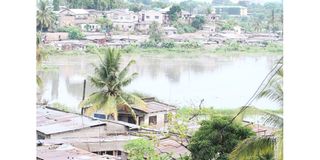Prime
Tanzania secures $300 million from World Bank to boost disaster preparedness

What you need to know:
- In recent years, events such as Cyclones Kenneth (2019), Jobo (2021), and Tropical Cyclone Hidaya (2023–2024), as well as El Niño-induced rains, resulted in 155 deaths, affected more than 200,000 people, and caused damages valued at $368 million.
Dar es Salaam. An estimated 1.9 million Tanzanians are expected to benefit from improved disaster preparedness and response capabilities, following the approval of $300 million (about Sh790 billion) in financing from the World Bank Group.
The new support, according to a statement issued by the World Bank, comprises a $100 million Development Policy Financing (DPF) package in the form of budget support and a $200 million Catastrophe Deferred Drawdown Option (Cat-DDO) from the International Development Association (IDA).
The package is aimed at strengthening Tanzania’s resilience to climate, fiscal, and disaster-related risks by enhancing the country’s technical, financial, and institutional capacity, it stated.
Tanzania faces increasing vulnerability to natural disasters due to rapid population growth and economic expansion. In recent years, events such as Cyclones Kenneth (2019), Jobo (2021), and Tropical Cyclone Hidaya (2023–2024), as well as El Niño-induced rains, resulted in 155 deaths, affected more than 200,000 people, and caused damages valued at $368 million.
According to the World Bank, this financing will help Tanzania build economic resilience by strengthening institutional frameworks, enhancing fiscal sustainability, and investing in disaster mitigation infrastructure.
“Tanzania is making steady progress to handle climate-related disasters but needs to double down on its resilience agenda through multi-sectoral, coordinated policy reforms to ensure long-term sustainability,” said the World Bank’s country director for Tanzania, Mr Nathan Belete.
“This new financing will support the implementation of climate and disaster risk management policies, improve coordination, and build institutional capacities to manage disaster-related interventions,” he added.
The reform programme is built around three strategic pillars.
The first pillar focuses on strengthening institutional and financial capacity for disaster preparedness and response. It includes expanding early warning systems in flood-prone areas, improving disaster risk management within the health sector, and boosting resources allocated to the national Contingency Fund.
The second pillar seeks to mainstream disaster risk management into key sectors. This includes integrating climate resilience into infrastructure planning and decision-making, promoting risk-informed urban planning, and improving the resilience of Zanzibar’s water and energy sectors.
The third pillar aims to enhance economic resilience and lay the groundwork for access to global carbon markets. This will involve strengthening financial, regulatory, and institutional systems and positioning Tanzania to tap into international climate finance opportunities.
“The economic costs of climate-induced disasters—including infrastructure damage, property loss, and business disruption—are significant and demand urgent action,” said Mr Yohannes Kesete, the World Bank’s Senior Disaster Risk Management Specialist and Task Team Leader.
“This initiative will provide Tanzania with a solid policy framework and essential contingent financing to ensure timely and effective responses to emergencies,” he added.




